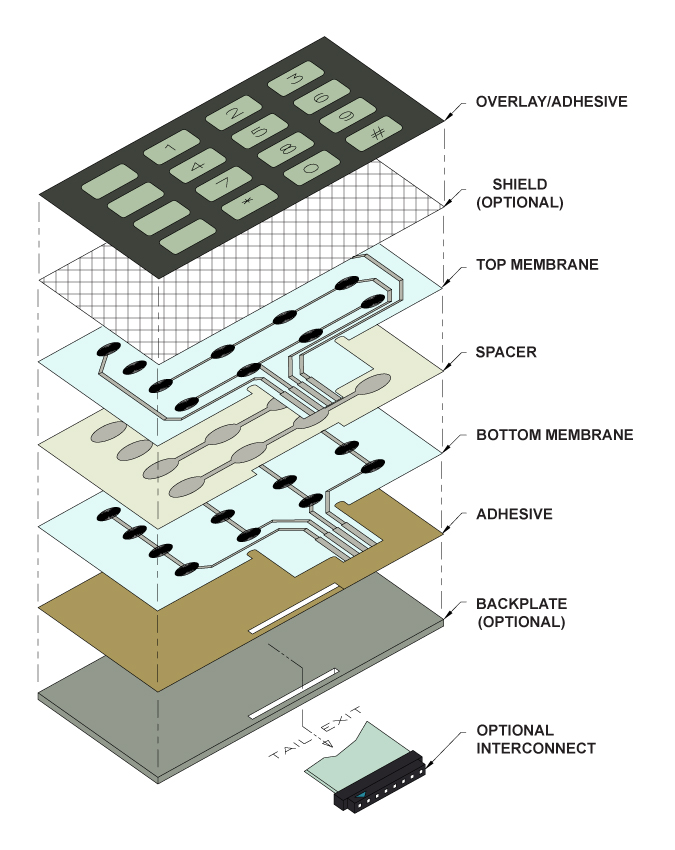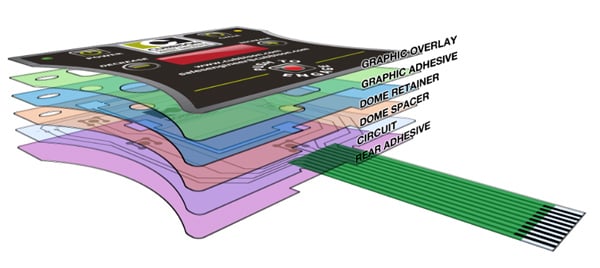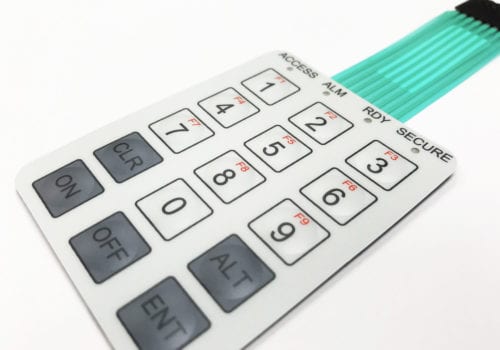Membrane Switch Over Modern Technology: The Trick to Trustworthy and Affordable User Interfaces
Membrane button technology has emerged as a crucial element in the style of customer interfaces, supplying both integrity and cost-effectiveness throughout a varied variety of applications. As we discover the complex benefits of membrane layer switches, their capacity for advancement elevates inquiries regarding future applications and progressing trends.
Comprehending Membrane Layer Change Modern Technology
Membrane layer switch modern technology is a widely utilized interface option in different electronic tools, supplying a seamless mix of capability and style. This modern technology includes several layers of materials, generally including a visuals overlay, spacer layer, and a circuit layer. The visuals overlay displays the user interface aspects, while the spacer layer divides the circuit layer from the overlay till a user turns on a switch.
When pressure is used to the overlay, the circuit layer finishes the electrical circuit, sending out a signal to the device. This system enables numerous setups, including responsive responses and backlighting choices, boosting customer communication. Membrane layer switches are usually made utilizing resilient materials such as polyester or polycarbonate, making sure longevity and resistance to ecological elements like wetness and dirt.
The flexibility of membrane changes enables their application in varied sectors, including medical tools, consumer electronics, and industrial controls. Their portable layout permits integration into space-constrained atmospheres, offering an efficient interface without compromising visual appeal. Understanding the intricacies of membrane switch modern technology is crucial for manufacturers and designers looking for to create dependable and reliable human-machine interfaces.
Secret Advantages of Membrane Buttons
While different interface services exist, membrane changes offer distinctive advantages that make them a favored option in various applications. One of the primary benefits is their toughness; membrane buttons are made to hold up against rough environmental problems, including dampness, dirt, and temperature level fluctuations, ensuring lasting performance. This resilience substantially lowers the demand for constant substitutes, thereby lowering total maintenance expenses.

Moreover, membrane buttons are light-weight and portable, making them ideal for applications where space is restricted. Their low-profile style adds to a sleek look without jeopardizing capability.
Cost-effectiveness is also a significant advantage, as the production process for membrane switches over has a tendency to be less costly contrasted to typical mechanical switches. This affordability, combined with their integrity and convenience of setup, settings membrane layer switches as a sensible option for a vast array of industries seeking reliable and reliable individual interfaces.
Applications Throughout Different Industries
How do membrane buttons adjust to the varied needs of various markets? Membrane layer switch technology is significantly recognized for its adaptability, making it suitable for a vast range of applications throughout multiple fields.
In consumer electronic devices, membrane switches provide a portable option for remotes and home devices, improving individual experience through intuitive style. In addition, the industrial sector leverages membrane layer buttons for equipment control board, gaining from their resistance to harsh atmospheres, such as dampness and dust.
Armed forces and aerospace applications also utilize membrane buttons for their dependability and ability to stand up to extreme problems, making certain operational effectiveness in critical scenarios. The food and drink sector adopts these switches for automated systems, where cleanliness and ease of procedure are extremely important (membrane switch). Ultimately, membrane buttons are look at this website tailored to meet the unique needs of each sector, showing their important role in modern innovation user interfaces
Design and Modification Choices

In the realm of membrane button modern technology, layout and personalization options play a pivotal role in enhancing capability and customer interaction. These switches can click here for more info be customized to satisfy particular functional demands and aesthetic preferences, making them functional elements in different applications.
Among the key modification choices is the format of the switch itself, which can be designed to suit unique individual interfaces and ergonomic considerations. By adjusting the form, size, and setup of buttons, manufacturers can produce user-friendly designs that promote ease of usage. Furthermore, the incorporation of various colors and graphic overlays permits branding and boosted exposure, guaranteeing that users can swiftly identify features.
Additionally, membrane layer buttons can be crafted with various tactile comments mechanisms, such as raised buttons or distinct clicks, to improve the customer experience. Various materials can additionally be selected for longevity and ecological resistance, addressing elements such as wetness, temperature level changes, and chemical direct exposure.
Ultimately, the comprehensive layout and personalization alternatives readily available in membrane button innovation equip organizations to produce customized options that not only satisfy practical demands yet also align with their branding and operational requirements.

Future Trends in Membrane Switches
As membrane button technology continues to develop, future trends are increasingly focused on boosting customer experience and incorporating innovative capabilities. One considerable trend is the assimilation of touch-sensitive and capacitive innovations into standard membrane switches. This growth permits more instinctive interface, giving responsive comments while maintaining a sleek design.
Another arising fad is making use of eco-friendly products, driven by the expanding need for sustainable manufacturing methods. Producers are seeking to lower their carbon impact by making use of recyclable substratums and low-impact inks, aligning with global sustainability goals.
Furthermore, the rise of the Internet of Things (IoT) is triggering click the unification of clever functions into membrane switches. Enhanced connectivity alternatives will enable tools to connect with each other, enabling seamless integration into more comprehensive systems.
In addition, innovations in printing innovations, such as electronic printing, are allowing for greater layout flexibility and personalization. This allows manufacturers to generate elaborate styles and dynamic colors cost-effectively.

Verdict
To conclude, membrane layer button innovation stands for a crucial development in interface design, supplying substantial benefits in toughness, customization, and cost-effectiveness. Its prevalent applicability across diverse markets underscores its value in modern-day innovation. As developments proceed to emerge, particularly in touch-sensitive user interfaces and sustainable materials, the capacity for membrane switches over to enhance individual experience and performance stays encouraging. Continued expedition of this innovation will likely yield additionally improvements and broaden its scope in future applications.